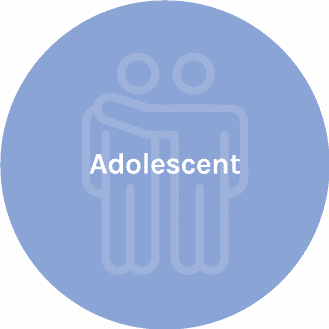Adolescent bracing

Like other types of scoliosis AIS is characterised by an abnormal sideways S or C curve of the spine. Children with AIS are generally otherwise healthy and normal. AIS is the most common type of scoliosis. Approximately 4% of all children between 10 and 18 years old will develop this type of scoliosis. AIS is more commonly seen in girls than boys – 90% of scoliosis cases are girls. AIS often begins to develop at the initial onset of puberty becoming more apparent as is worsens during growth spurts.
AIS has a better prognosis than juvenile scoliosis, but can still progress to become a significant deformity if it is not detected early and properly managed. It is not uncommon for adolescents with large curves or curves that progress quickly to develop some back pain. The most effective non surgical treatment is bracing but for curves under 25 degrees exercise may appropriate.
What causes Adolescent Idiopathic Scoliosis (AIS)?
The exact cause of adolescent scoliosis is unknown hence its classification as an “idiopathic” scoliosis. Idiopathic literally means “of unknown cause”. The most widely accepted theory explaining the development of adolescent scoliosis is one involving a genetic trigger. Adolescent scoliosis is often seen occurring in members of the same family, in the same and in past generations. Scientists believe that a set of genes that may trigger scoliosis may be inherited.
However, scoliosis does not always appear in subsequent generations i.e. not every child of parents who have scoliosis will develop the condition. This suggests that individuals are affected by these genes to different degrees and that other factors may be required for a scoliosis to develop. Research at several institutions has uncovered several different genes that appear to be associated with scoliosis and genetic tests that can identify these genes are currently being trialed.
How is Adolescent Idiopathic Scoliosis (AIS) diagnosed?
In the absence of school screenings, adolescent scoliosis is usually first noticed by the child or a family member of the child. A common test used to screen for scoliosis is called the “Adams forward bending test”. In this test the child or adolescent, bends forward at the waist until the spine is parallel with the floor. The examiner stands behind the child and observes the shape of the spine as they are bend over. The main feature alerting the examiner to a scoliosis is the presence of a rib hump, which is typically seen in a thoracic scoliosis. A rib hump is where the ribs on one side protrude more compared to the other side when the child is bent forward. A special instrument that looks similar to a spirit level called a scoliometer can be used to measure the extent of the humping. In some cases the scoliosis is not in the upper part of the torso but in the lower back. Therefore screening should also consist of examination of the whole upright posture including the level of the hips as well as the Adams test.
When scoliosis is suspected, a careful neurological exam and MRI should always be carried out to ensure that the scoliosis is not the result of a neurological condition and that the spinal cord is not being affected by another disease. As well as an MRI it is important for x-rays of the spine to be taken. X-ray should be taken standing up to give a true representation of the curve under the load of gravity. X-rays also give clear images of the bones and allow for more precise measurements of the curvature. How is Adolescent Idiopathic Scoliosis (AIS) treated?


